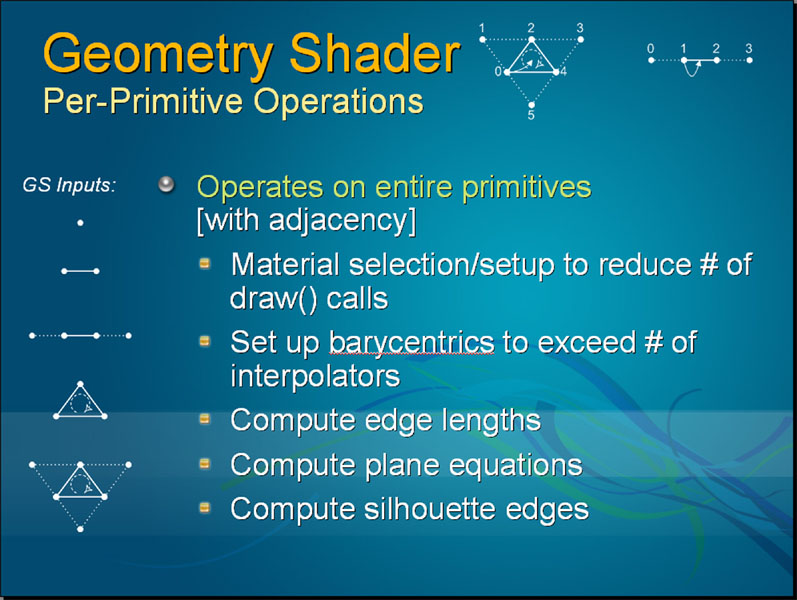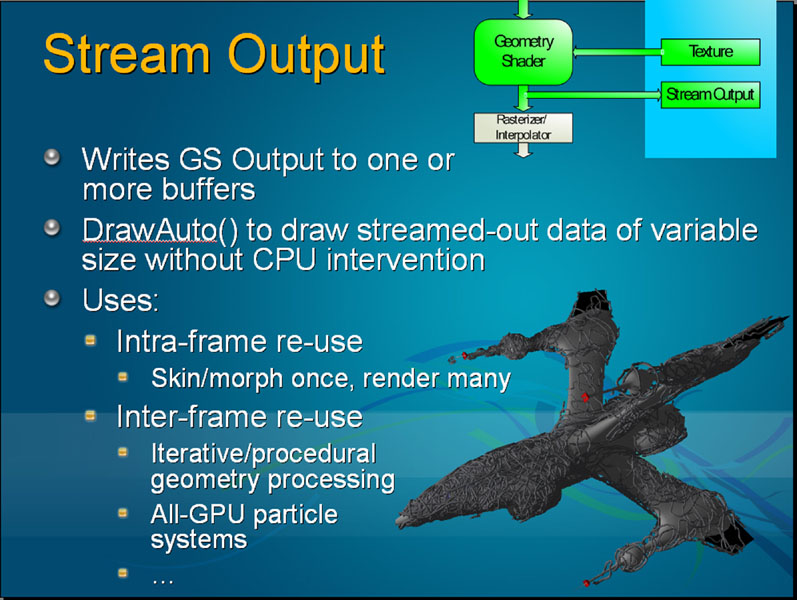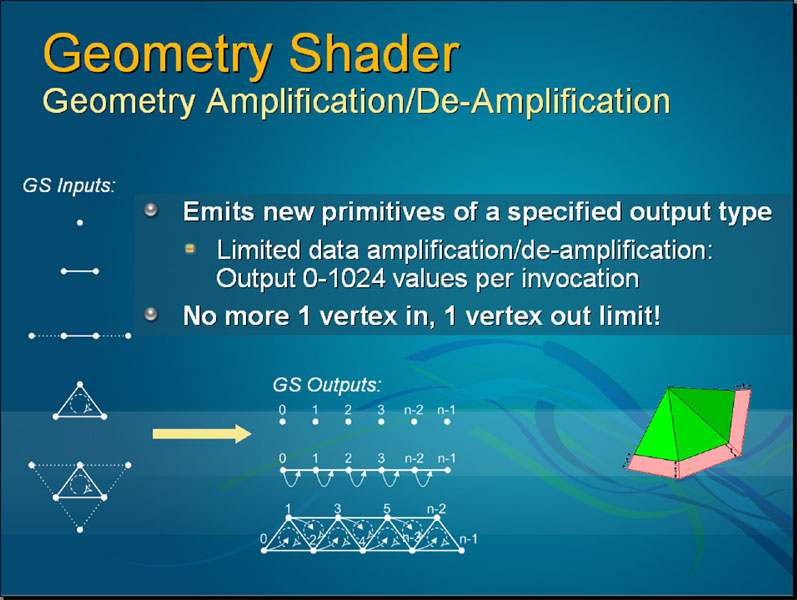Megadrive1988
Veteran
what exactly is a geometry shader, and how does it differ from a vertex shader with SM3.0/3.0+ capabilities?
here's my limited understanding of geometry processors in GPUs/ graphics systems:
geometry engines: pre-NV10 non-consumer graphics chips / graphics systems i.e. SGI RealityEngine, InfiniteReality, arcade boards, and other non-gamer highend 3D cards of the 1990s.
T&L unit: pretty much the same as a geometry engine - first used in consumer cards like NV10 - GeForce 256.
vertex shaders - all modern consumer GPUs have these
geometry shader ???? I guess this will replace the vertex shader in DX10 hardware ?
here's my limited understanding of geometry processors in GPUs/ graphics systems:
geometry engines: pre-NV10 non-consumer graphics chips / graphics systems i.e. SGI RealityEngine, InfiniteReality, arcade boards, and other non-gamer highend 3D cards of the 1990s.
T&L unit: pretty much the same as a geometry engine - first used in consumer cards like NV10 - GeForce 256.
vertex shaders - all modern consumer GPUs have these
geometry shader ???? I guess this will replace the vertex shader in DX10 hardware ?




